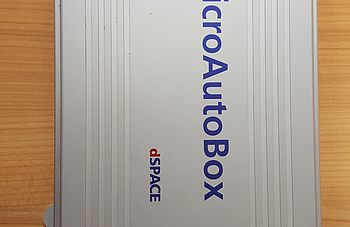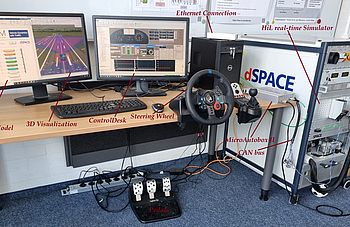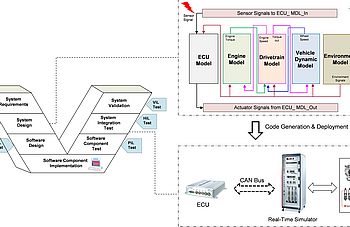Hardware in the Loop Lab
Hardware in the Loop (HIL) Lab
Do you strive to work on innovative and cutting-edge challenges of improving the dependability of automotive software?
Are you seeking to improve your skills and learn new technologies in the field of real time simulation and testing of automotive?
Hardware-in-the-Loop (HIL) simulation has been highly recommended by automotive functional safety standard ISO 26262 as a safe, reliable, and realistic simulation platform for real-time validation.
HIL Lab offers you the opportunity to broaden your horizons and stay up to date with challenging and attractive projects for testing complex real-time control systems with experimental test scenarios. The main goal of the lab is to develop new methods for evaluating the dependability of automotive software systems and validating safety mechanisms at an early stage of the system development process using new technologies, e.g., Machine Learning (ML).
(HIL) simulation is a best platform for you, not only to validate the new functionality in the real-time under normal and abnormal conditions, but also to analyze the effect of faults of communication, actuators, sensors and controller on the overall system in safe environment. Besides, machine-learning techniques are employed in the lab so that the testing activities can be conducted automatically in efficient manner, i.e., fault effect analysis, fault detection and classification. By doing so, not only the safety and reliability aspects is improved, but also the costs and effort of validation process are reduced.
Current Research Directions:
- Real-time fault injection for analysing system behaviour under abnormal conditions.
- Continuous testing of software-driven automotive systems using test automation and DevOps approach.
- ML-based fault detection and classification during HIL test process at system integration testing phase.
- Developing a digital test drive platform for real-time validation of automotive systems.
Lab Infrastructure
- Real-time simulator (dSPACE SCALEXIO)
- Real ECU (MicroAutoBox II)
- Real vehicle elements (sensors and actuators, e.g., fuel pressure sensor and throttle)
- Real wheels and pedals
- High-fidelity entire vehicle model and ECU model
- Industrial software development tools form dSPACE, e.g., ModelDesk, ControlDesk, MotionDesk, AutomationDesk.
Contact:
E-Mail: Mohammad Abboush






